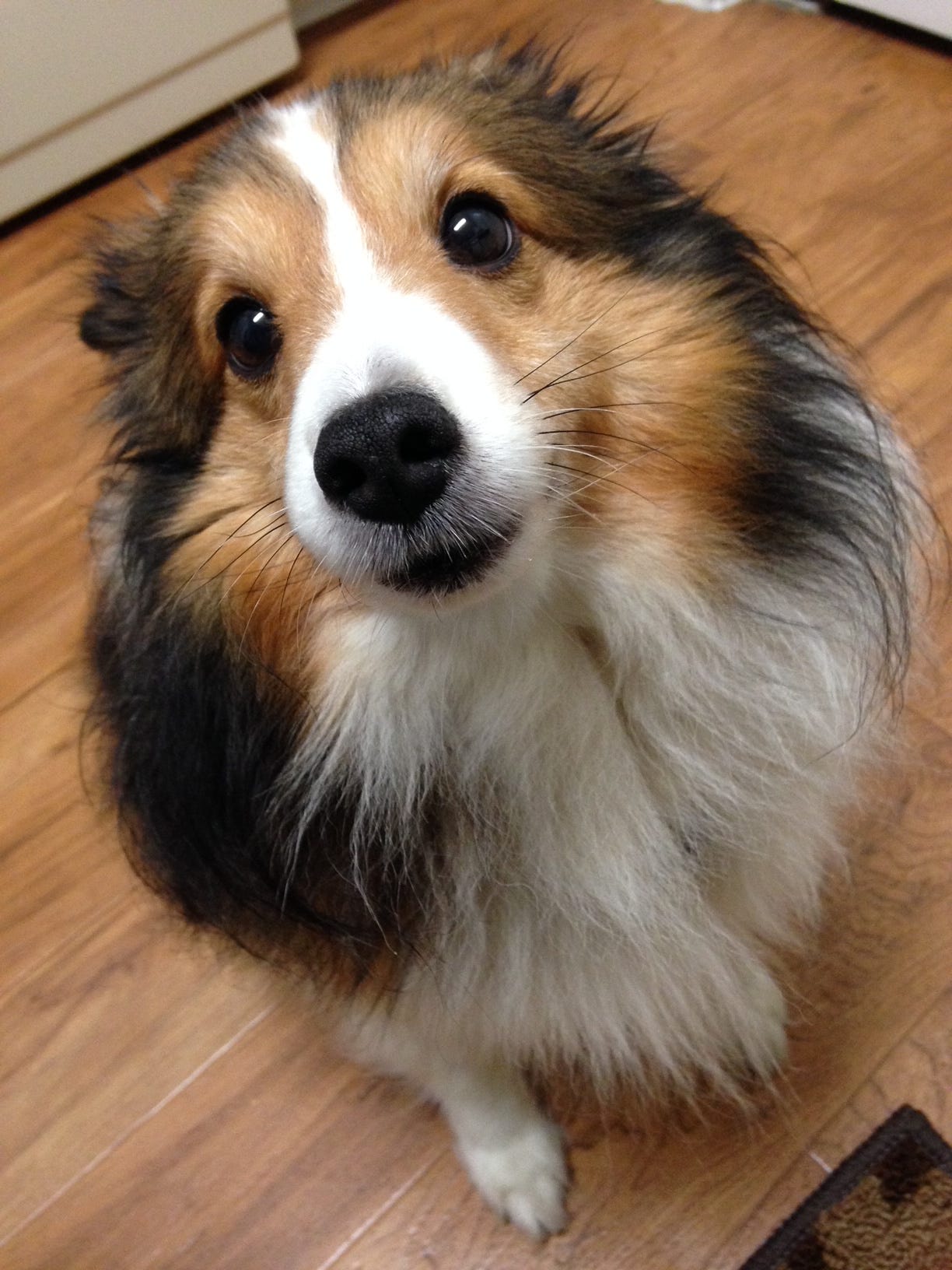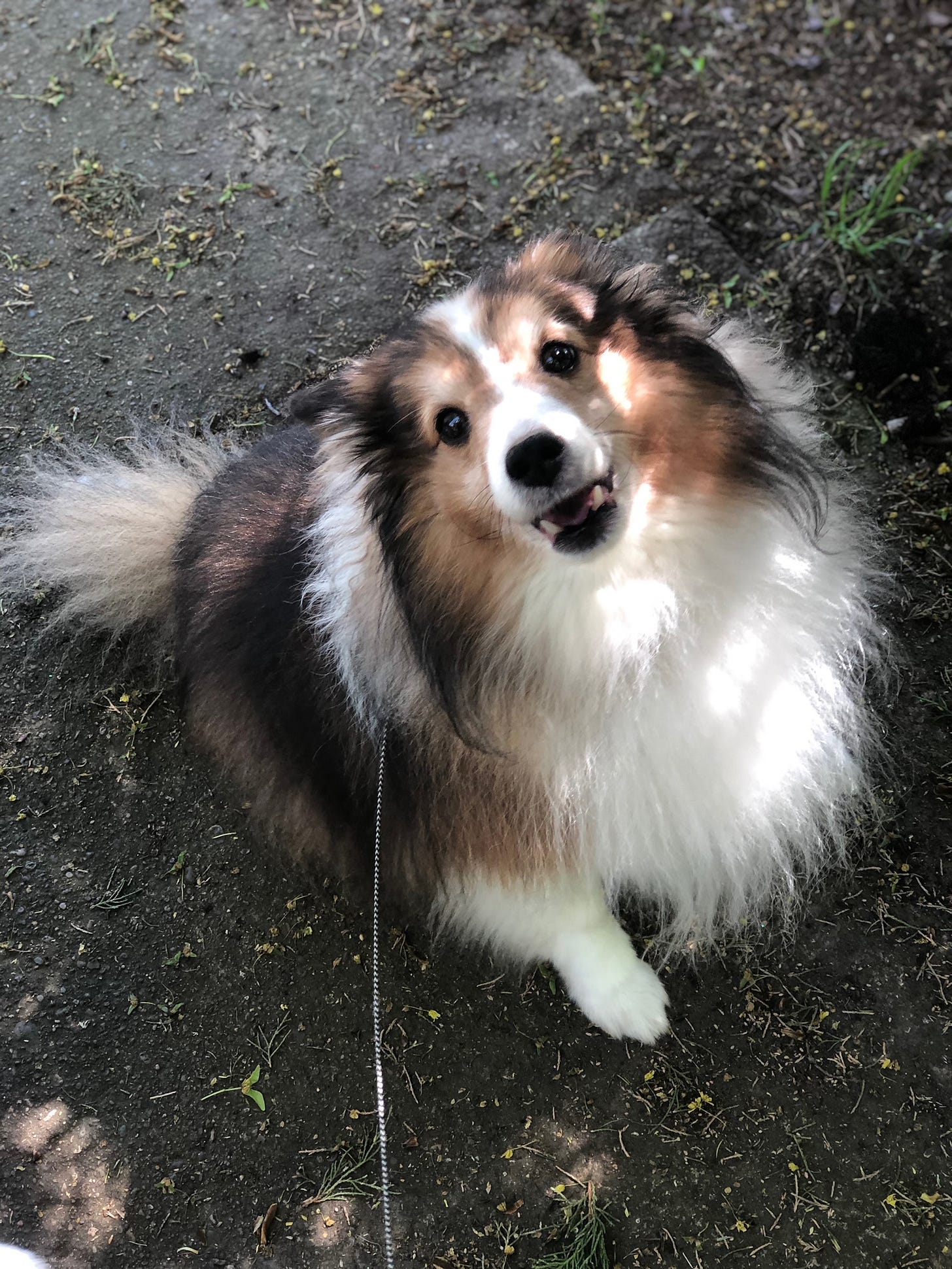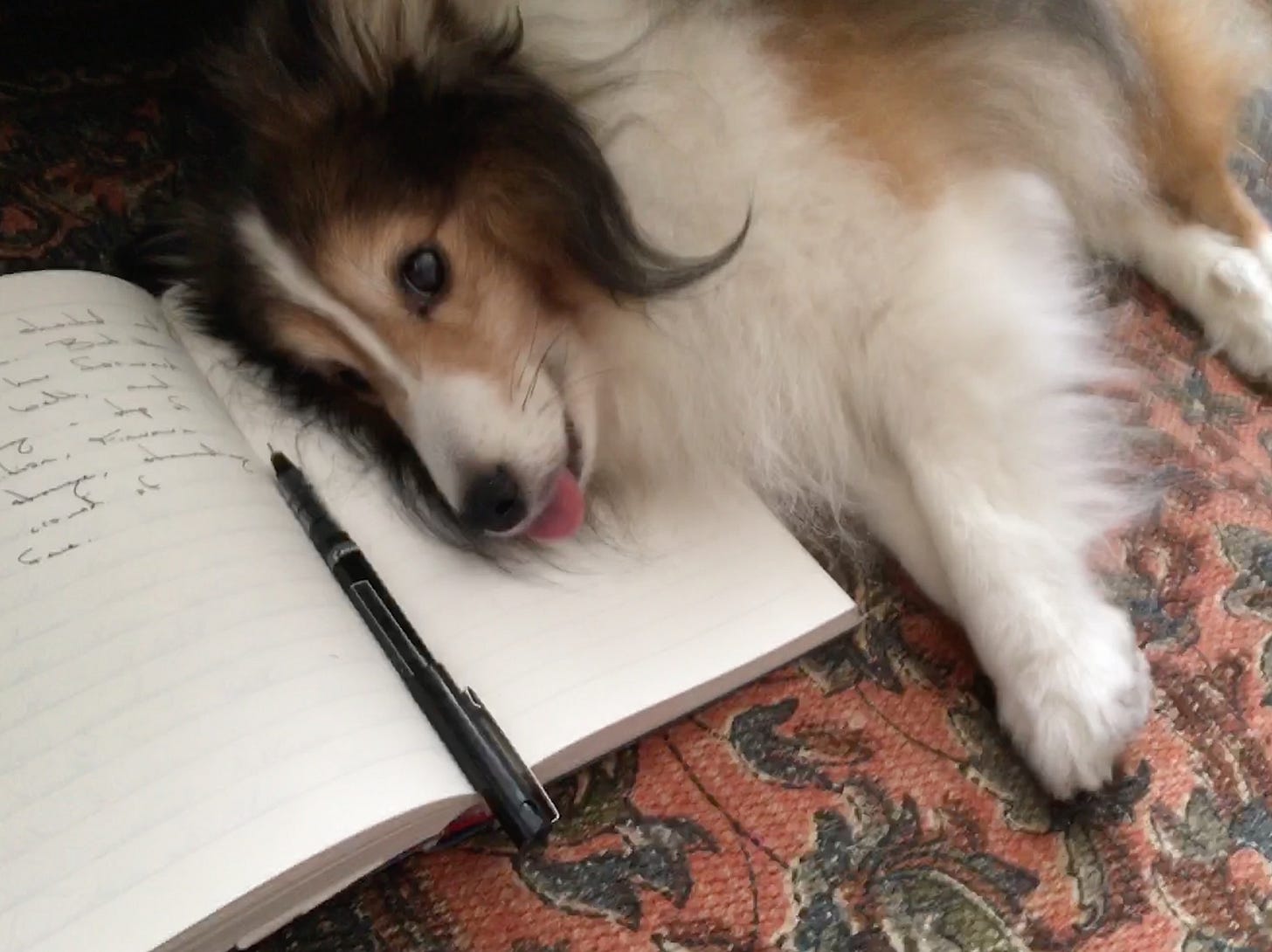I tell people that I trained my sheltie Sam to give hugs. I’d sit on the ground, tap my shoulder, and say, “Give me a hug!” He’d delightedly jump into my lap, put his paws on my shoulder, and bury his face in the crook of my neck while I scratched his back and haunches.
But here’s the thing. There was no point where I intentionally trained Sammy to put his paws on my shoulder or nuzzle me. I wish I was that good. No, Sammy used his adorable little fluffy face to manipulate me into scratching his butt.
My 12-pound, walnut-brained sheltie trained me. And without realizing it, you may be training other people to do what you want – or don’t want – too.
Here’s how it went down with Sammy: he had bad allergies when I first adopted him. He’d scratch so hard, it would leave him out of breath. While I worked to get his symptoms under control, he did everything in his power to get me to scratch him. This usually looked like getting in my face so I couldn’t see the TV, lying across my notebook or laptop so I couldn’t work, and grunting like a weird little fluffy pig.
His most effective trick was waiting until I sat on the couch, jumping into my lap, and nudging my hand. I would oblige by scratching his neck and shoulders, but that wasn’t where he was most itchy. To get me to move my hands where he wanted them, he started burying his face in the crook of my neck, putting me in a position where I had no choice but to scratch his haunches.
Eventually, I thought to myself, I could tell Sam to give me a hug when he does this and it’ll be the best party trick ever. Plus, every time he snuggled me like that, my heart exploded with love and joy.
I didn’t know Sammy was training me any more than he did. We were both just trying to get our needs met (Sammy: butt scratches. Me: snuggles), and it happened to work out in a way that was reinforcing for both of us.
Human interactions work this way, too. We spend a lot of time training each other in ways we’re not aware of. For example, let’s say that when Paulo puts his dishes in the dishwasher, his mom Maria quips, “It would be nice if you did that all the time.” While this may be true, Maria’s comment is actually a punishment. Paulo did the behavior Maria wanted, but instead of praising him for that behavior, she punished him by scolding him for the times in the past that he didn't do it. As a result, he’s probably more likely to avoid the dishes altogether in the future. Maria has no idea that she’s training her son, but she’s doing it all the same.
But if Maria thanks Paulo for putting his dishes in the dishwasher, she’s marking his behavior as something she wants him to do. She’s rewarding him. If she can catch him every time he does this and reinforce it by thanking him, she’s going to increase his motivation to put his dishes in the dishwasher. She’s training him. As a result, he’ll be more likely to put his dishes in the dishwasher, which means he’s training her too! He’s rewarding her approach by giving her what she wants, which makes her more likely to use that approach going forward. And still, neither of them is aware of it.
With this positive reinforcement approach, both Maria and Paulo are getting their needs met. Maria doesn’t have to fight with her son to do his chores, and she doesn’t have to do his chores for him. Paulo feels appreciated for completing a task, he feels a sense of independence in his ability to complete the task, and he clearly understands what is expected of him.
It isn’t a question of whether you’re training the people in your life – everyone does this all the time. It’s a question of how. With Sammy, neither of us was aware that we were training each other, but we both benefited from it. Sometimes that lack of awareness leads to training other people to do things we don’t want, like leaving dishes in the sink or their bedroom. If you start to pay attention to how you’re training the people around you, you can make more intentional choices of reinforcing what you want and ignoring what you don’t want.
Now it’s your turn: what behaviors has your dog trained you to do? What have you accidentally trained your dog?









I accidentally trained my dog to want to stay in the house rather than go in her outside enclosure after our walks. We had two weeks straight of rain. Every walk rendered Shiloh a soggy mess. I'd put her in the coat room with towels and her treat puzzle. She'd get dry, the dirt would fall, I was happy - until I realized she no longer wanted to be outside in her enclosure after a walk - she wanted to be in the coat room solving puzzles and eating treats!
Every evening we go through a series of “let me out and come back in so I get I treat” moments. It’s a whole thing, not as good as snuggles/butt scratches, though!